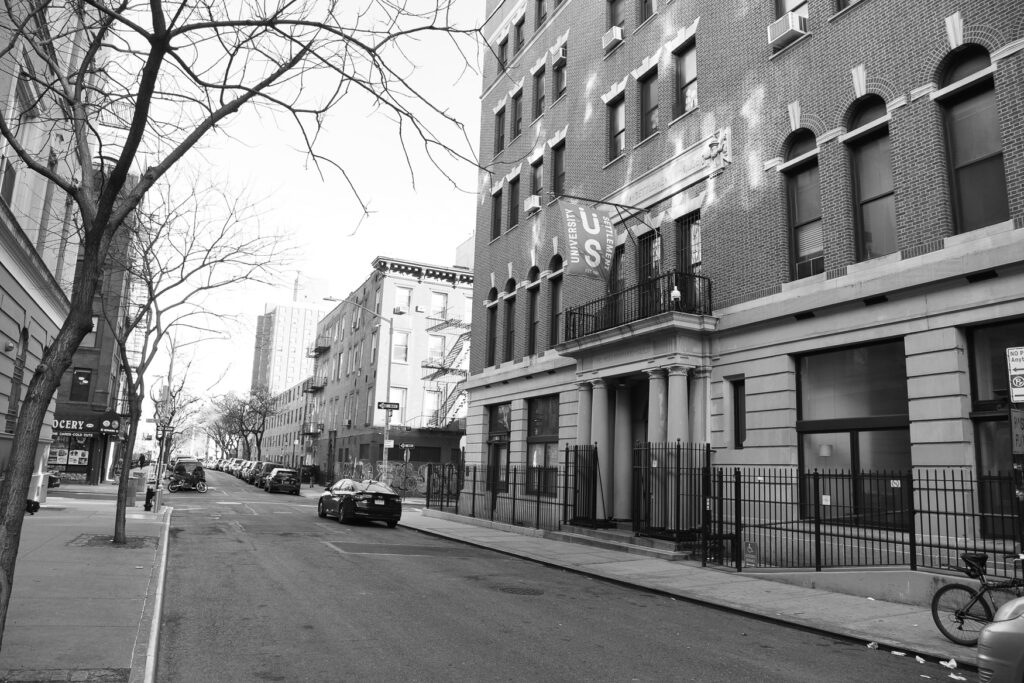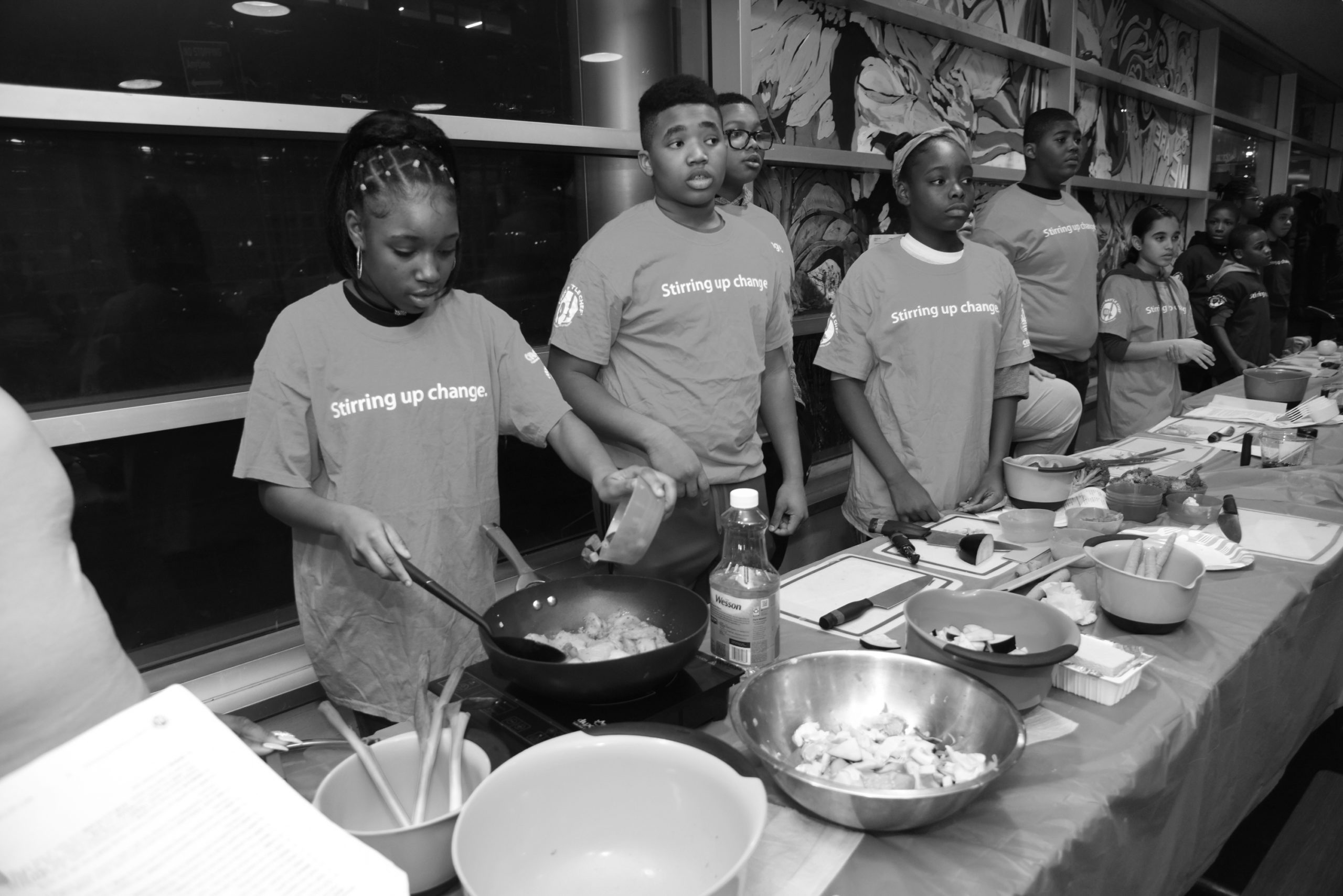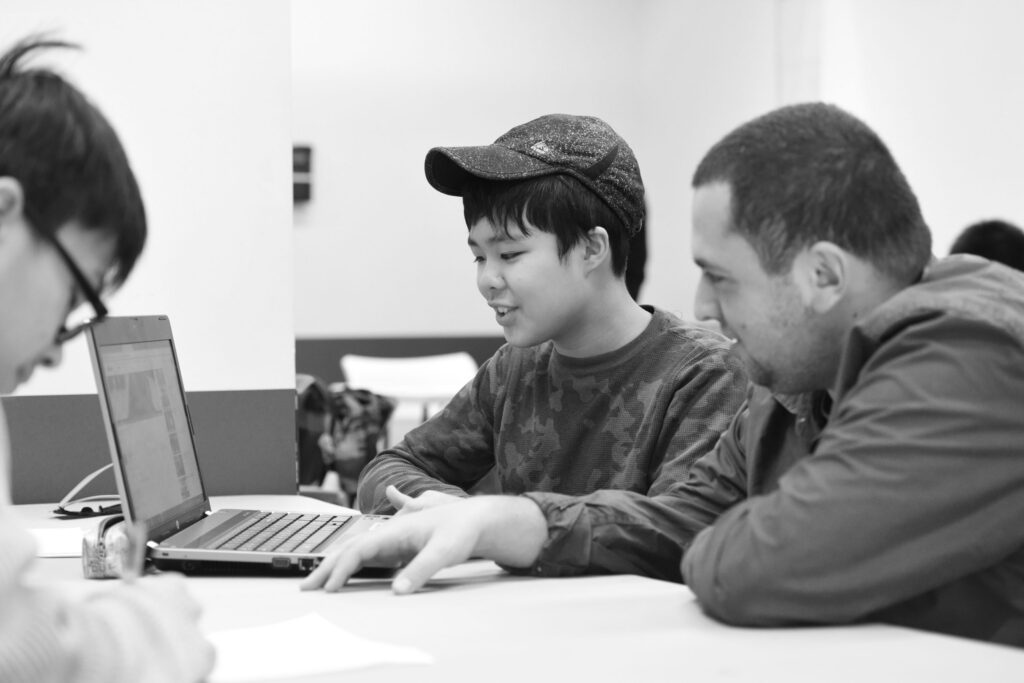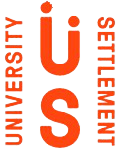A Settlement House for the 21st Century
Established in 1886 as the first settlement house in the United States (and the second in the world), we bring the always vital values of our historic movement into the modern day by fighting poverty and systemic inequality with responsive programs; engaging all members of our community, from newborns to elders; and nurturing the whole person by addressing basic needs so that everyone can participate in culture, learning, and community.
Settlement houses have never been more relevant. The model, which is designed to evolve, remains evergreen. Our history informs us but does not bind us. We honor it. As our neighborhoods change, we change. And as our neighbors shape our work, and our efforts help shape public policy, our city changes – for the better.
A HAVEN ON THE LOWER EAST SIDE
In the 1880s, many thousands of new immigrants living in poverty, nurturing a dream, and struggling to adapt to a new, often unwelcoming country moved into the Lower East Side. Into this overcrowded urban neighborhood came a group of reformers – including Stanton Coit, Charles B. Stover, and Carl Schurz – who settled in the community, became intimately acquainted with its problems, and recognized a need for change.
These reformers sought effective and respectful answers to immigrants’ poverty that went beyond “charity.” In 1886 Coit, Stover, and Schurz established University Settlement – a physical, psychological, and spiritual haven where people of all ages and backgrounds could seek advice, assistance, education, or a simple respite from the harsh realities of everyday life.
With University Settlement, the American settlement house movement was born. Named for the way they brought reformers directly into the communities where immigrants lived to facilitate learning and cooperation, settlement houses caught on quickly – by 1908, there were 19 in NYC, and many more nationally.


A HISTORY OF FIRSTS
University Settlement’s history is marked by firsts – the first public bath, the first round of Head Start. In 1945 we launched one of the first community-based mental health clinics in New York City to provide expert care for World War II veterans suffering from “shell shock,” or what we now recognize as PTSD. Our distinguished alumni include individuals such as George and Ira Gershwin, former Mayor Abraham Beame, and Jacob Javits. Over the years,
Eleanor Roosevelt, John D. Rockefeller, and countless others have lent support. Today, a paid, professional staff of more than 700 joins with dedicated volunteers to uphold our original mission to meet the ever-changing needs of our community. Thanks to these tireless efforts, University Settlement continues to be a pioneer in the field of social services.
OUR 21ST CENTURY INITIATIVES
As the Lower East Side gentrified in the late 90s and early 2000s, we evolved along with it, continuing to engage new immigrants while building responsive programs alongside our neighbors.
In 2000, we began partnering with The Door, which creates safe spaces for young people to go when their homes and communities fail to support them effectively. Our generative collaboration spanned decades (concluding in 2021) and helped ensure the continued success of one of New York City’s most innovative social services organizations. Simultaneously, we grew our positive youth development work in local communities across Lower Manhattan and Brooklyn, partnering with schools K-12, teachers and administrators, and parents and caregivers to build supportive environments where youth learn, grow, and find their paths forward; in many cases these youth programs were our first operations in Brooklyn communities.
In the years since, we’ve built trusted partnerships in Fort Greene, East New York, and other Brooklyn neighborhoods where our values resonate, learning different approaches with the benefit of fresh perspectives. We’ve expanded our mental health, eviction prevention, and early childhood offerings to these new neighborhoods, keeping as our guiding principle the belief that every location of University Settlement is an important part of our One House.
In 2006, decades of advocacy paid off when we helped found the Houston Street Center, which brought a wealth of resources including a competition-sized pool and a wide variety of meeting spaces to the community.
When the community-based nursing home at Rivington House faced conversion into luxury housing in 2014 we helped lead community opposition to the plan. Our advocacy succeeded, ensuring that the Lower East Side retained crucial health infrastructure.
In the 21st century, our deep roots and relationships in our communities have played a significant role in our approach to disaster response, beginning in 2001 with the 9/11 attacks. When Hurricane Sandy flooded the Lower East Side in 2012, we coordinated distribution of supplies and cash assistance to neighbors even while a widespread power outage kept the lights off at our headquarters for weeks. We then partnered with FEMA’s Project Hope to reach more than 30,000 community members with supports to ensure continued physical and mental wellness in the storm’s aftermath, co-founded the LES Ready Emergency Response Group, and committed to adding emergency response
resources, including a generator, to our historic headquarters, so we will be able to do even more in response to future climate disasters.
Responding to the COVID pandemic in early 2020, we quickly shifted to offer many services virtually, ensuring that our neighbors could access support while going through a very traumatic time, while also expanding direct deliveries of food and basic supplies for home-bound older adults and low-income families.
Building on our legacy of stigma-breaking innovation in community-based mental health, in the post-pandemic era we have deepened our commitment to integrating robust, high quality mental health approaches and care into all of our programs, including our work with children, young people, and older adults – a vital investment in the wellness of our neighbors and communities.


